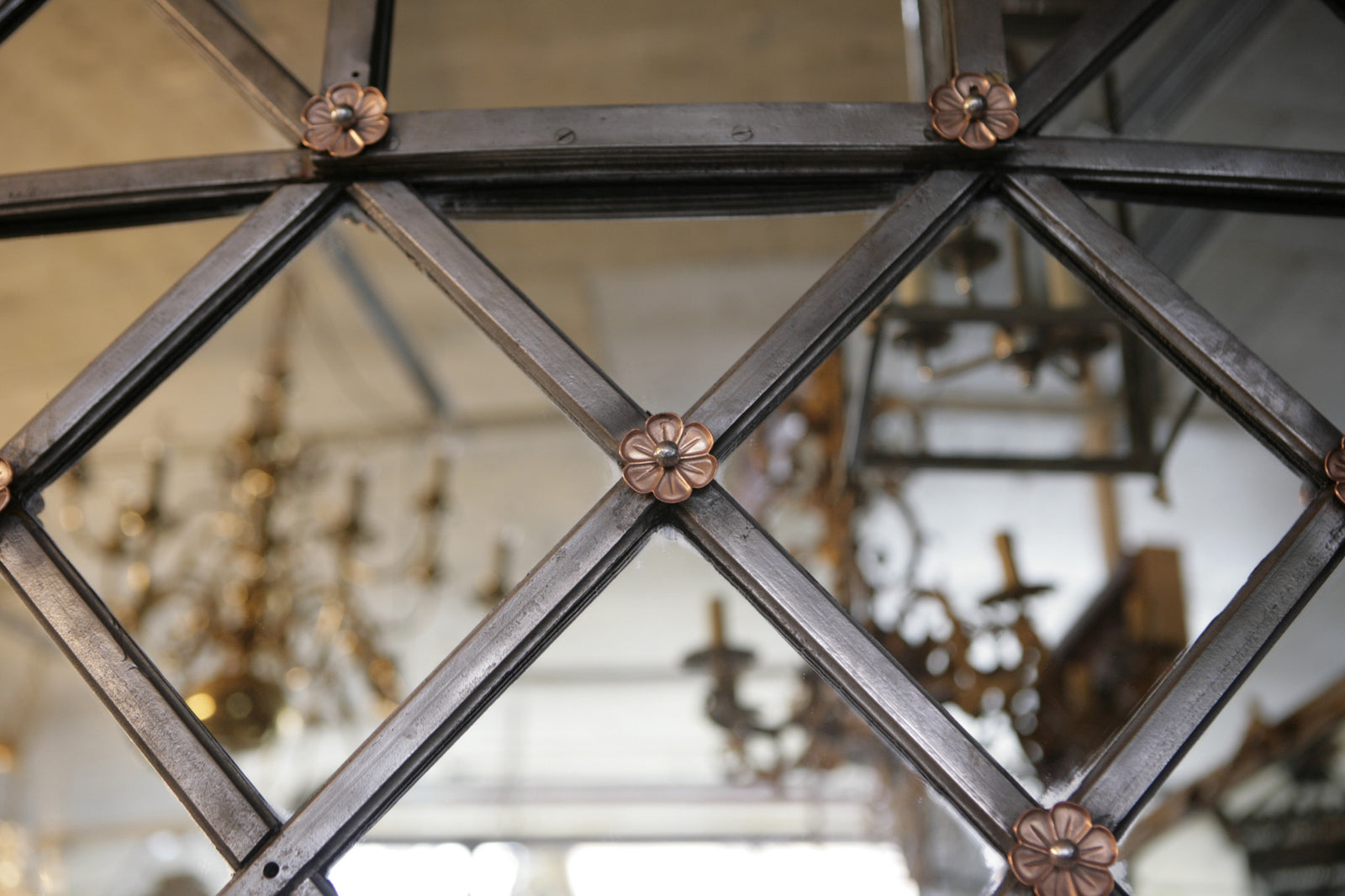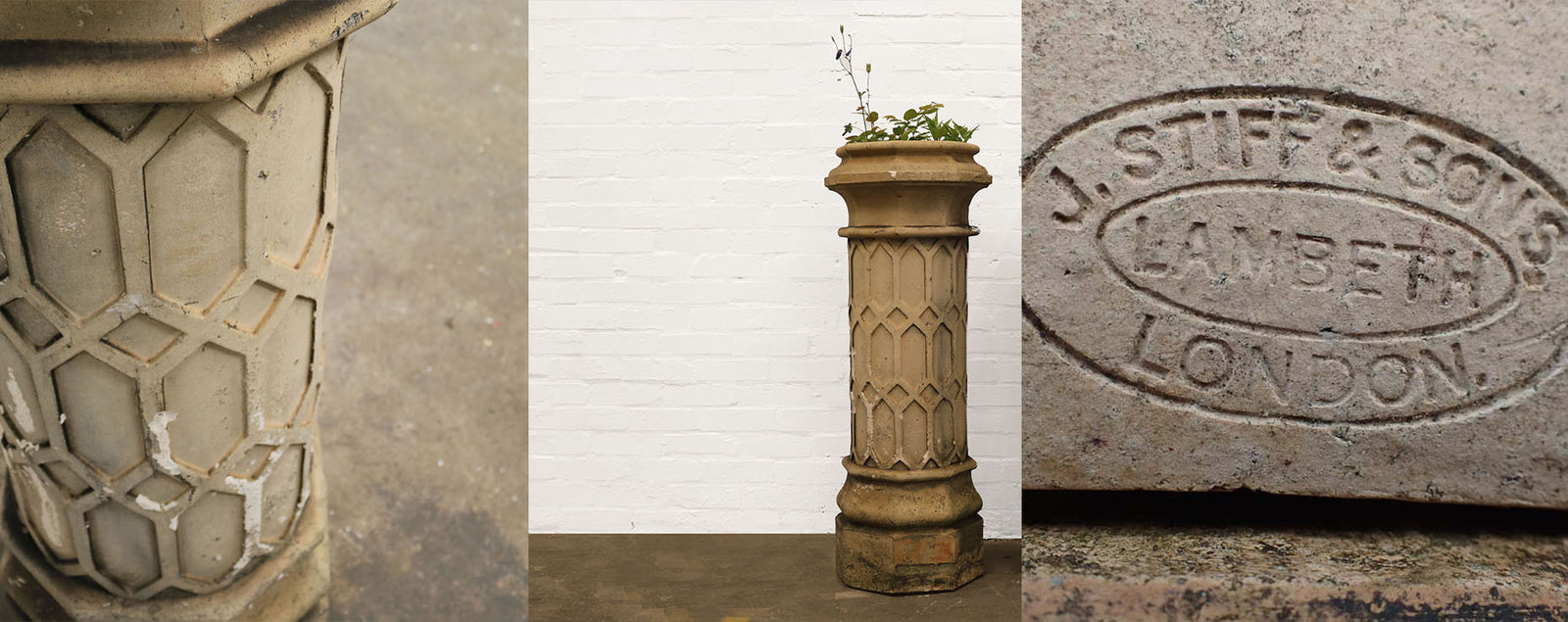
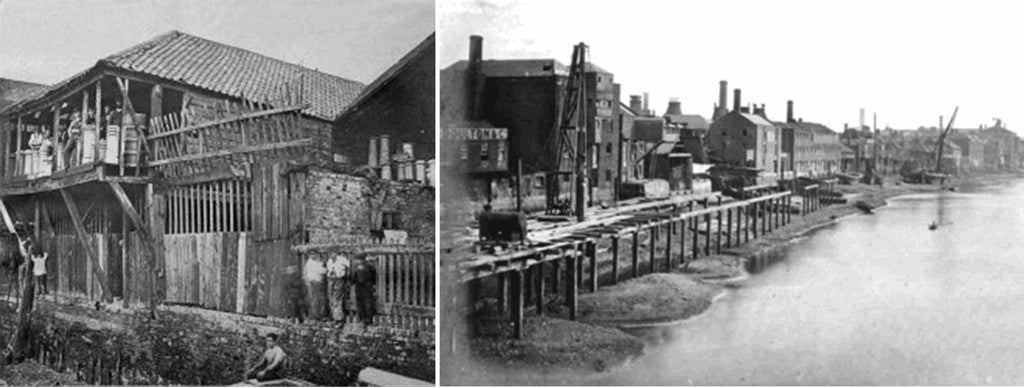 Left Rear of Upper-Fore-Street, c1866 RightPothouses on the banks of the river Thames
Left Rear of Upper-Fore-Street, c1866 RightPothouses on the banks of the river Thames
Pottery production has been has known to exist in Lambeth, South London, since Roman times. The Potteries, also known as Pothouses, concentrated near the River Thames between Vauxhall Bridge and Lambeth Bridge.
The sixteenth century and the introduction of tin mining saw rise to the popularity of Lambeth pottery. Cutting edge techniques of tin-glazing otherwise known as Delftware, a method of producing a white glazed pottery that can be over painted with metal oxides to create intricate patterns or pictures, made lambeth pottery extremely sought after.
Pothouses produced an array of Lambeth Delftware tiles, porous domestic tableware, wine jars, and apothecary pots. In the mid seventeenth century, the introduction of tea and chocolate into English polite society allowed the industry to flourish; As Rachel Reynolds mentions in her post for the Dulwich View "ladies who lunched were desperate for the very latest teapots and cups to show off at their tea parties."
 Left English Lambeth Delftware Centre Salt, second half 17th century, British, Lambeth, Tin-enameled earthenware (Delftware) RightA London Delft Blue and white coffee cup sold by Christies.
Left English Lambeth Delftware Centre Salt, second half 17th century, British, Lambeth, Tin-enameled earthenware (Delftware) RightA London Delft Blue and white coffee cup sold by Christies.
The eighteenth century saw industrial development in Staffordshire which challenged that of London. Staffordshire potters developed a non-porous, cream-glazed earthenware more suitable for domestic tableware than that produced by its Lambeth counterpart.
In Lambeth a few potters continued making a salt-glazed stoneware (the glaze is formed by throwing common salt into the kiln during firing).

 Left Advert for Doulton and Co Plumbing cruciblesRight Samples of Stoneware plumbing crucibles manufactured by Doulton and Watts
Left Advert for Doulton and Co Plumbing cruciblesRight Samples of Stoneware plumbing crucibles manufactured by Doulton and Watts
Royal Doulton, formally Doulton & Watts is arguably the best known of the Lambeth stoneware potteries.
Doulton and Watt’s created a market in leech holders for doctors, ink bottles and chemists pots and notably the sewage pipes under the roads of London. In the 1850’s, the company began a new initiative called Doulton & Co’s decorative stoneware. They collaborated with the nearby Lambeth School of Art to produce highly decorative tableware, sculptural panels and tiles.
A number of stoneware potteries in Lambeth emerged in the eighteenth and nineteenth centuries notably James Stiff and Sons and Stephen Green’s Imperial pottery.
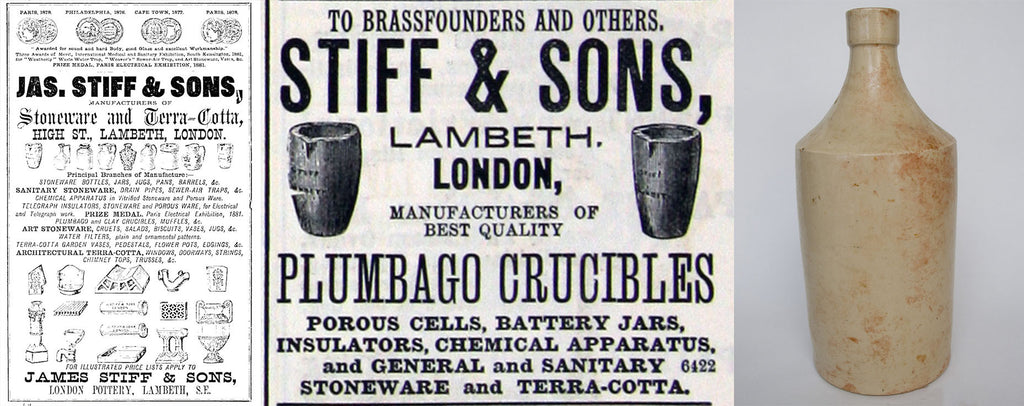 Left Advert for Jas. Stiff & Sons RightSalt Glazed Stoneware vessel by J.Stiif & Sons
Left Advert for Jas. Stiff & Sons RightSalt Glazed Stoneware vessel by J.Stiif & Sons
The clean Air Initiative of 1956 halted production in Lambeth, forcing Pottery production to stop.
We are lucky to have acquired two J.Stiff & Sons Chimneys. These fabulous cream terracotta, salt glazed chimney stacks, feature basket weave detailing and are stamped with the iconic J Stiff & Sons pottery stamp. Read more about this company on our website listing.
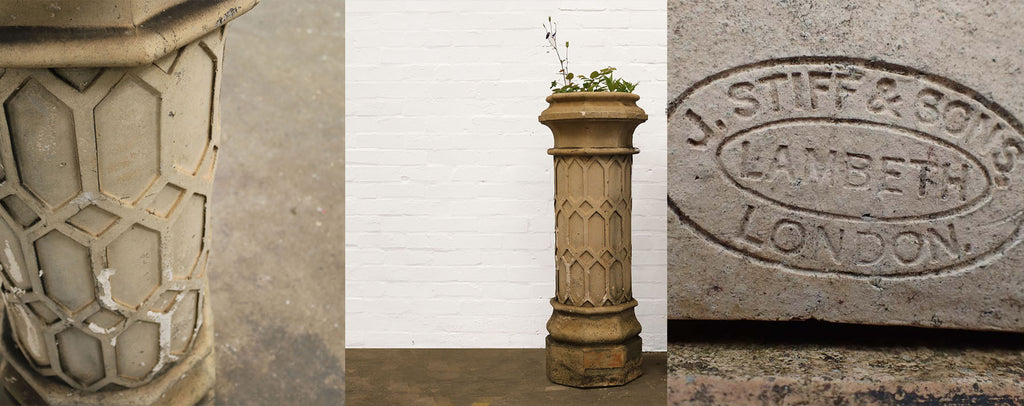

























 Left Rear of Upper-Fore-Street, c1866 RightPothouses on the banks of the river Thames
Left Rear of Upper-Fore-Street, c1866 RightPothouses on the banks of the river Thames  Left English Lambeth Delftware Centre Salt, second half 17th century, British, Lambeth, Tin-enameled earthenware (Delftware) RightA London Delft Blue and white coffee cup sold by Christies.
Left English Lambeth Delftware Centre Salt, second half 17th century, British, Lambeth, Tin-enameled earthenware (Delftware) RightA London Delft Blue and white coffee cup sold by Christies.

 Left
Left Left
Left